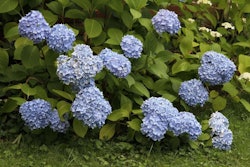 A rendering of the funerary garden by CSIC Communications.
A rendering of the funerary garden by CSIC Communications.Photo: CSIC Communications
A group of archaeologists from the Spanish National Research Council have discovered a 4,000-year-old funerary garden in Luxor, Egypt.
This find is the first garden of its kind to be located, despite their appearance in hieroglyphics at the entrances of tombs as well on tomb walls, which depicted how Egyptians wanted their funerals to be.
“This is the first time that a physical garden has ever been found, and it is therefore the first time that archaeology can confirm what has been deduced from iconography,” Jose Manuel Galan, lead research professor of the Djehuty Project, told ScienceDaily. “The discovery and thorough analysis of the garden will provide valuable information about both the botany and the environmental conditions of ancient Thebes, of Luxor, 4,000 years ago.”
The garden was constructed during the Twelfth Dynasty, which was when Thebes was the capital of the unified kingdom of Upper and Lower Egypt.
 This is the funerary garden discovered by the research team.
This is the funerary garden discovered by the research team.Photo: CSIC Communications
Despite the raised garden’s small proportions of about 10 feet wide by 6.5 feet long, researchers theorize that it may have contained many different types of plants and flowers. The funeral garden was also divided into a grid arrangement of 0.03 square feet beds in rows of five or seven.
“The plants grown there would have had a symbolic meaning and may have played a role in funerary rituals,” Galan said. “We know that palm, sycamore and Persea trees were associated with the deceased’s power of resurrection. Similarly, plants such as the lettuce had connotations with fertility and therefore a return to life.”
The researchers will have to wait and see what plants they can identify by the seeds they collected, but they do know for certain one of the plants that was grown in the funeral garden. In one corner, they found a still upright tamarisk shrub complete with its roots and 11-inch long trunk.
“Digging in a necropolis not only allows us to discover details about the world of funerals, religious beliefs and funerary practices, it also helps us discover details about daily life, about society and about the physical environment, both plant and animal,” Galan said. “The necropolis thus becomes, as the ancient Egyptians themselves believed, the best way to understand and embrace life.”










